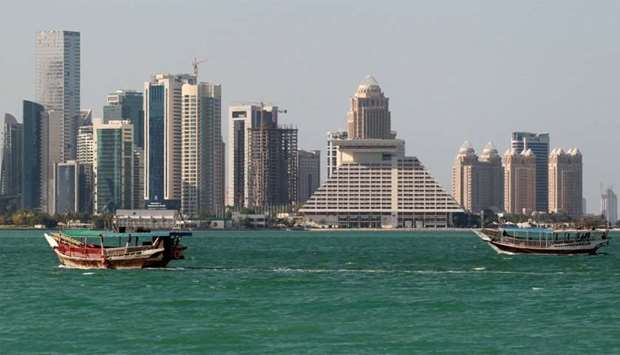S&P Global Ratings said that its affirmation of Qatar’s 'AA-/A-1+' ratings with a stable outlook is “supported by Qatar’s very strong external and fiscal positions.”
The country’s strong external and fiscal positions are “underpinned by relatively low central-government debt and the large external assets Qatar has built up over several years,” it has said.
S&P said it does not expect Qatar's fiscal and external positions to materially deteriorate beyond its current expectations, while hydrocarbon prices could remain low, it said on Saturday.
The stable outlook, S&P said, indicates its view of “broadly balanced risks” to the ratings.
“Despite our view of continued institutional weakness, we expect a timely policy response from the government in the context of soft economic growth and continued stress in the international capital markets,” S&P said.
Drawing an “upside” scenario, S&P said, “We could consider raising the ratings if Qatar's political institutions were to develop in line with those of its peers outside the region, and we observed a marked increase in transparency, including greater clarity on the Qatari government's external assets.”
S&P’s “downside” scenario said, “We could lower the ratings if Qatar's public finances or external position materially weakened compared with our forecasts. This could happen, for example, as a result of a decline in hydrocarbon revenue beyond our assumptions without a sufficient fiscal policy response.
“Such a weakening could also entail significant capital outflows and larger or more prolonged current account deficits than we currently anticipate, which might reduce Qatar's external buffers to absorb additional shocks.”
S&P said when it last reviewed Qatar it expected Brent oil prices to average $60 per barrel in 2020 and to gradually decline to $55 in 2021 and beyond.
“We now assume an average Brent oil price of $30/b in 2020 and $50/b in 2021, and $55/b from 2022,” it said.
Oil prices plummeted following Opec's failure to agree on further production cuts during meetings on March 6. Opec+ did not agree to a proposed reduction of 1.5mn bpd to address an expected significant drop in global demand partly due to the spread of the coronavirus. The proposed reduction was in addition to the current 2.1mn bpd production decrease set to expire at the end of March.
Oil markets are now heading into a period of a severe supply-demand imbalance in second-quarter 2020. In line with its March 17 economic outlook it anticipates a recovery in both
Qatar derives about 50% of its GDP, 80% of government revenue, and more than 85% of exports from the hydrocarbon sector, S&P noted.
This, it said “makes the country's undiversified economy and credit profile vulnerable to a steep and sustained decline in the oil price, to which most of Qatar's long-term gas contracts are linked.
“Its expectation of lower oil prices will weigh on the country's economic outlook and it projects average growth at about 1.5% over the forecast horizon through 2023. Downside risks to growth in the short term are subject to reduced activity due to the Covid-19 pandemic.
“Nevertheless, we expect the deterioration in Qatar's credit profile to be contained. The ratings are supported by the very strong external and fiscal positions, which are underpinned by relatively low central-government debt and the large external assets Qatar has built up over several years. In view of oil price assumptions, we forecast that the general government balance will record a deficit of 2% of GDP in 2020 compared with a 6.6% surplus in the previous year and revert to about 4.5% surplus by 2023.
“Mirroring developments on the fiscal side, Qatar's external accounts will run a deficit through 2021, before reverting to about 4.2% surplus in the remainder of the forecast period. We now project liquid external assets will exceed external debt by 93% of current account payments (CAPs) over the forecast horizon, which compares with 136% in our last publication,” S&P said.
Despite increased external financing needs, S&P said it “still regard Qatar's overall external position to be a key strength, underpinned by our estimate of its large liquid financial assets, equivalent to more than 100% of GDP. This provides the government with an exceptional buffer during financial shocks. We believe that the authorities are likely to provide extraordinary liquidity support to the banking system, in case of sudden reversals in foreign flows.”
The government's timely intervention during the ongoing blockade, to curb the pressure emanating from external funds outflows, supports its view, S&P said.



